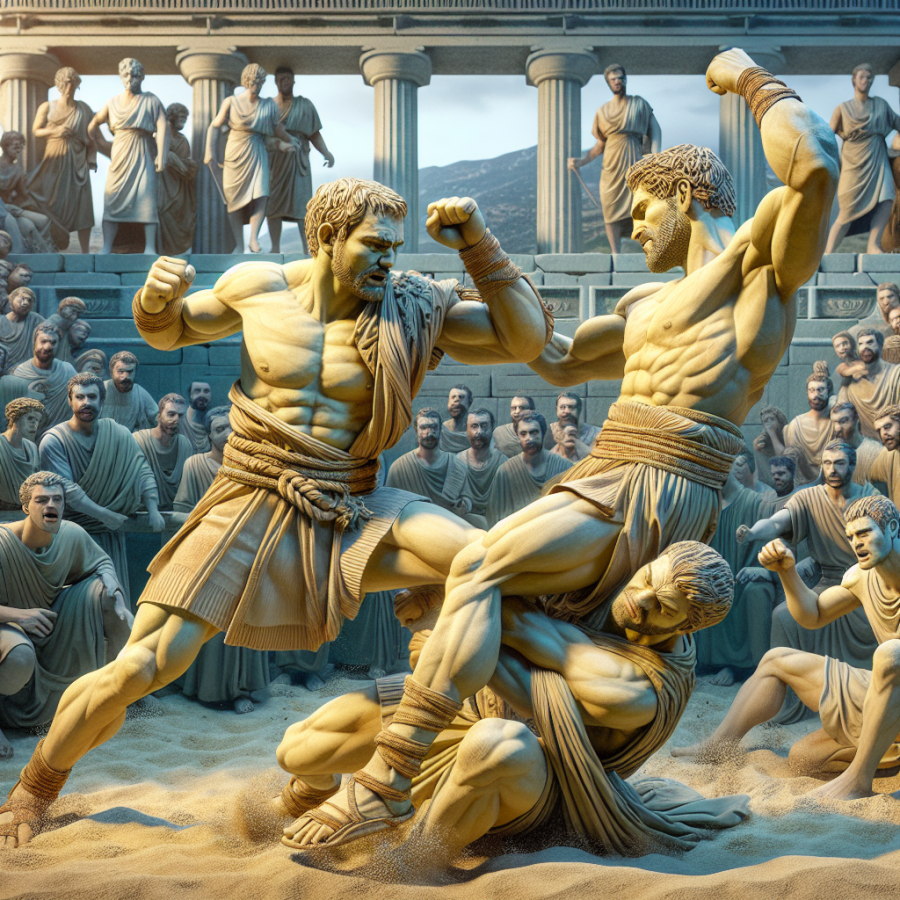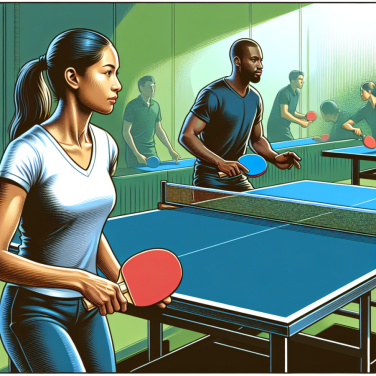Pankration Through the Ages: The Evolution of a Fierce Olympic Discipline
Pankration, an ancient Greek martial art, has captivated historians and martial enthusiasts alike for centuries, originating as a formidable Olympic event in 648 BCE. Its roots can be traced back to mythological tales where heroes like Theseus and Heracles demonstrated pankration-like skills. The sport was a blend of boxing and wrestling—participants could employ a wide array of techniques, except for biting and gouging, to subdue their opponents. Victory was claimed either by submission or, more ominously, if an opponent was incapacitated or killed, drawing a dark and brutal line under the matches.
As the popularity of pankration flourished through the ancient Olympic Games, it became an integral part of Greek culture, emphasizing physical prowess and strategic skill. The sport's influence extended beyond the competitive realm, as it was also a key element in Greek military training. Due to its practicality in hand-to-hand combat, soldiers were taught pankration techniques to ensure their survival and dominance on the battlefield.
When we consider the evolution of pankration through the ages, its adaptation and resilience are quite remarkable. Despite the decline of the ancient Olympic Games and the eventual rise of the Roman Empire, which brought about changes to Greek traditions, pankration persisted in various forms. It evolved through the ages, blending with other cultural fighting styles under the Romans, and it even managed to endure the seismic shifts of the Middle Ages and the Renaissance, albeit in less prominent forms.
The true renaissance of pankration came in modern times, where there's been a surge of interest in historical martial arts. Today’s pankration, while not identical to its ancient ancestor, attempts to preserve the original spirit while conforming to modern safety standards. Modern pankration tournaments are held worldwide, with athletes competing under the banner of organizations like the World Pankration Athlima Federation. These competitions seek to replicate the all-encompassing nature of the sport while eliminating the life-threatening aspects that characterized the ancient games. Strikes, kicks, throws, and submission holds are all still present, showcasing the versatility that made pankration a legendary combat sport.
Contemporary mixed martial arts (MMA) is often thought of as the cultural successor to pankration, sharing its core idea of combining various fighting disciplines. In MMA, athletes train in boxing, wrestling, jiu-jitsu, and more—much like ancient pankratiasts—and must be skilled in both striking and grappling to succeed.
Read also:
Exploring London Through its Numerous Soccer Teams
Tracing the Origins of Pankration: The Blend of Wrestling and Boxing in Ancient Greece
Pankration, a formidable combat sport that has captivated historians and martial arts enthusiasts alike, traces its storied origins to the heyday of ancient Greece, where it was celebrated as a blend of the two most respected athletic endeavors of the era: wrestling and boxing.
The inception of pankration can be credited to the ancient Greek desire to forge a martial discipline that encompassed the full spectrum of unarmed combat. This pursuit led to the synthesis of the grappling mastery found in wrestling with the striking prowess characteristic of boxing, fashioning a discipline that demanded both brute strength and technical finesse. Pankration’s roots are steeped in Greek mythology, where it is said that the heroes Heracles and Theseus exercised pankration techniques to vanquish notorious mythological beasts, such as the Nemean Lion and the Minotaur, respectively.
Stepping into the factual timeline, the first recorded inclusion of pankration in the Olympic Games dates to 648 BC. Its introduction was a testament to the evolving concept of athletic competition in ancient Greece, where physical contests evolved to more closely mimic the skills soldiers might need in battle. The matches were held within the confines of a designated space, akin to a wrestling ring, and the athletes—known as pankratiasts—were admired for their sheer versatility as they seamlessly transitioned between striking and grappling to overpower their opponents.
Unlike wrestling, which prohibited punches and purposefully harmful maneuvers, pankration was characterized by fewer rules, permitting the combatants to unleash a wider array of aggressive tactics. Only intentional gouging of the eyes or biting were explicitly forbidden; all other forms of offense were permissible, and victory could be claimed through submission of the opponent or by incapacitation. The sport was so physically demanding that it was not uncommon for matches to end with severe injuries or even the death of a contender, although the latter was not the desired outcome.
Training for pankration was rigorous, often occurring within the confines of a palaestra or gymnasium. Here, future athletes conditioned their bodies for the physical trials of the sport while honing their prowess in both the components from which pankration was derived. Wrestlers accustomed to the intricacies of takedowns and joint locks mixed with boxers, whose skill in delivering forceful strikes was unparalleled.




